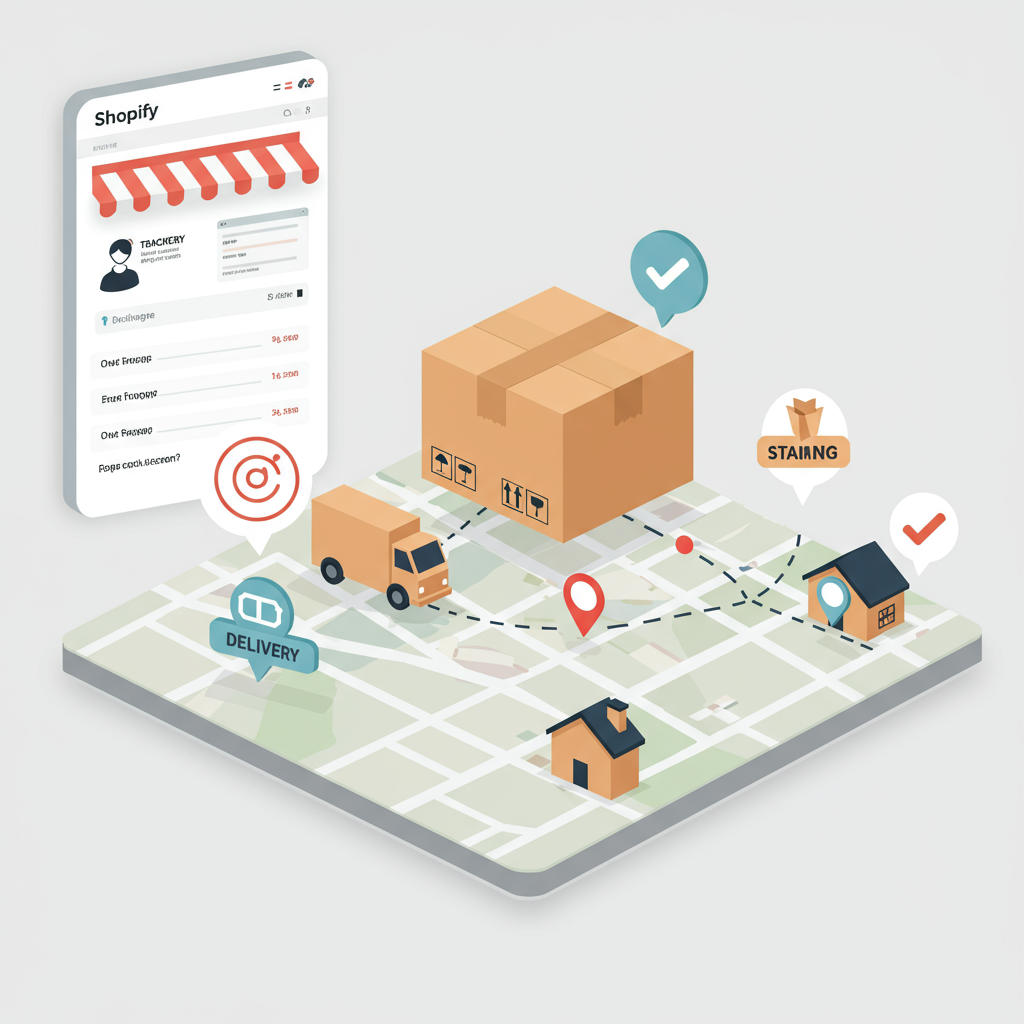Elevate Customer Satisfaction and Streamline Operations with Seamless Tracking Integrations.
As a Shopify merchant, I understand that your primary goal is to provide an exceptional shopping experience. This doesn’t end when a customer clicks ‘purchase’; in fact, it’s just the beginning of a crucial phase: order fulfillment and delivery.
One of the most common questions customers have after placing an order is, ‘Where is my order?’ This seemingly simple query can become a significant drain on your customer service resources if not handled efficiently.
That’s where robust order tracking integration comes into play. It’s not just a nice-to-have feature; it’s a fundamental component of modern e-commerce that can significantly impact your brand’s reputation and customer loyalty.
In this comprehensive guide, I’ll walk you through the ins and outs of integrating effective order tracking into your Shopify store. We’ll explore why it’s so important, the various methods available, and how to choose the best solution for your business.
First, let’s talk about the ‘why.’ Why should you invest time and resources into superior order tracking? The answer is multifaceted, benefiting both your customers and your operational efficiency.
For your customers, transparent tracking provides peace of mind. They can follow their package’s journey from your warehouse to their doorstep, reducing anxiety and the need to contact your support team for updates.
This transparency builds trust. When customers feel informed and in control, they are more likely to have a positive perception of your brand, leading to repeat purchases and valuable word-of-mouth referrals.
From an operational standpoint, effective tracking drastically reduces ‘WISMO’ (Where Is My Order) inquiries. Imagine the time your customer service team saves when customers can self-serve their tracking needs.
This freed-up time allows your team to focus on more complex issues, improving overall support quality and reducing operational costs associated with high inquiry volumes.
Shopify offers some basic tracking capabilities natively, but these are often limited. They typically provide a link to the carrier’s website, which can be a disjointed experience for your customers.
A truly integrated solution brings the tracking experience directly into your store, often on a branded tracking page, maintaining consistency and reinforcing your brand identity.
So, how do we achieve this seamless integration? There are generally two main approaches: utilizing Shopify apps or implementing custom solutions via APIs and webhooks.
For most merchants, especially those without dedicated development teams, leveraging a specialized Shopify app is by far the easiest and most efficient path. These apps are designed to integrate seamlessly and offer a wealth of features.
When choosing an app, I recommend looking for features like multi-carrier support, branded tracking pages, automated email/SMS notifications, delivery exception alerts, and analytics.
Popular choices include AfterShip, 17TRACK, and ParcelPanel. Each offers a slightly different set of features and pricing tiers, so it’s worth exploring a few to find the best fit for your specific needs.
The process of integrating an app is usually straightforward: visit the Shopify App Store, select your chosen app, click ‘Add app,’ and follow the installation prompts. Most apps will then guide you through a setup wizard.
During setup, you’ll typically connect your shipping carriers (e.g., USPS, FedEx, UPS, DHL) and customize your tracking page with your brand’s logo and colors. You can also configure automated notification triggers.
These notifications are incredibly powerful. Imagine your customer receiving an email or SMS when their order ships, when it’s out for delivery, or when it’s been delivered. This proactive communication is a game-changer.
For merchants with unique requirements or a strong development team, custom integration via Shopify’s APIs and webhooks offers maximum flexibility. This involves writing code to pull tracking data from carriers and display it on your site.
While more complex, a custom solution allows for complete control over the user experience and can be tailored precisely to your business logic. However, it requires significant technical expertise and ongoing maintenance.
Regardless of the method you choose, here are some best practices I’ve found invaluable: always provide a clear, easily accessible link to the tracking page on your order confirmation emails and your website.
Ensure your tracking page is mobile-friendly. A significant portion of your customers will be checking their order status on their phones, so a responsive design is crucial for a positive experience.
Proactively manage delivery exceptions. If a package is delayed or encounters an issue, your tracking system should ideally alert you so you can inform the customer before they even realize there’s a problem.
Integrate your tracking data with your customer support platform. This allows your support agents to quickly access tracking information when a customer does reach out, speeding up resolution times.
Finally, don’t forget to collect feedback. What do you think about this article? Your insights are valuable! Understanding your customers’ tracking experience can help you continually refine and improve your process.
In conclusion, investing in a robust order tracking integration for your Shopify store is an investment in customer satisfaction, operational efficiency, and ultimately, the long-term success of your brand.
By providing transparency and proactive communication, you transform a potentially stressful waiting period into another opportunity to delight your customers and build lasting loyalty. It’s a win-win for everyone involved.






